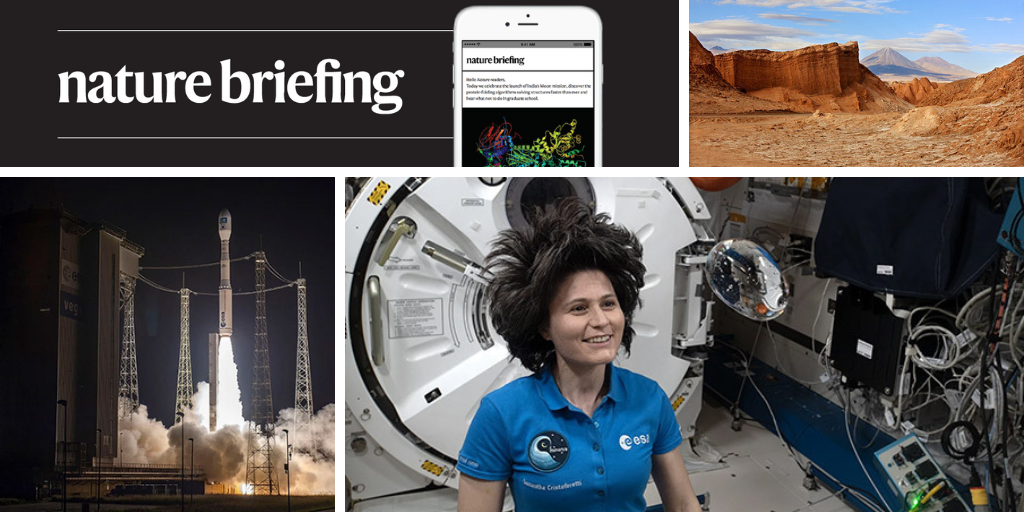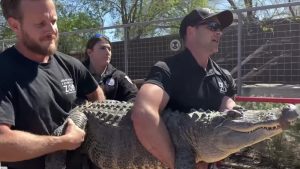
The tools can help visually impaired scientists
SciA11y: a machine learning tool for scientists with low visual acuity to read and access PDF’s, and how to navigate in the bibliography
Nearly 240 data scientists have proved themselves nimble enough at their work to be certified instructors for the ‘tidyverse’, a popular package for manipulating and visualizing data in the R programming language. The first blind instructor to receive certification is a member of that group.
There are no good estimates of how many scientists with low vision are working today, but a 2020 study1 found that fewer than 100 of 52,124 researchers applying for funding from the US National Institutes of Health (NIH) in 2018 self-identified as having a visual impairment. “It’s a fraction of a fraction,” says Bonnielin Swenor, an epidemiologist and director of the Disability Research Center at Johns Hopkins University in Baltimore, Maryland, who led that work. Many scientists with vision disabilities are prevented from applying for research grants because of ableist hurdles. The number of individuals with visual disabilities in the US is much smaller than that of the population as a whole. In 2017, some 7 million people in the United States were living with uncorrectable loss of visual acuity or blindness. “If the goal is parity with prevalence in the US — which I argue it should be — we aren’t close,” she says.
People whose visual acuity is too low for them to read magnified text generally use screen readers, which convert digital text into either synthesized speech or a tactile (Braille) display.
Six scientists with vision loss told of how they were unable to read or access PDF’s. Some respondents said that they used at least six different approaches to read the paper, and that they encountered problems two-thirds of the time. “It was eye-opening to see the range of tools that people use when reading — and the struggles they have when those papers have not been formulated appropriately,” Bragg says.
A tool calledSciA11y, developed by the Allen Institute for Artificial intelligence in Seattle, Washington., uses machine learning to derive the contents and structure of a PDF and transform it into a table of contents in less than a second. AI2 has also built in functionality such as bidirectional navigation between in-line citations and their corresponding references in the bibliography, says Jonathan Bragg, who co-leads the project.
In that respect, SciA11y is not unique: for visually impaired people, tables and images present challenges that are even harder to solve than text itself. Precious little scientific literature — whether in PDF, HTML or another format — includes textual descriptions of figures, called alt text, that would enable a blind or low-vision person to understand the images. What’s more, it’s not always clear what sort of explanation would be most relevant. “There are different schools of thought,” says Amy Bower, a blind physical oceanographer at the Woods Hole Oceanographic Institution in Massachusetts. “Should you just describe what’s there, or should you add the interpretation?”
Some researchers work with sighted interpreters to solve the issue. The Massachusetts Institute of Technology in Cambridge and others have collaborated with Hajas to create a screen-reader that can show different levels of description, from a single sentence to a more detailed characterization. The team at Olli is working on new features such as heat maps, and they currently support bar charts and scatterplots.
Seo is also developing a data visualization tool, and he is drawing on more than just speech. The tool, called the multimodal access and interactive data representation system (MAIDR), encodes data as both sounds — termed sonification — and Braille, providing tactile analysis with the help of a refreshable Braille display. “I can hear the trend of the data in sound, and feel the pattern,” Seo says.
Experiencing data through touch can be especially powerful, says Mona Minkara, a computational chemist and bioengineer at Northeastern University in Boston, Massachusetts, who began to lose her vision as a young child. Minkara collaborated on a study in which they used 3D-printed graphics. Different types of data, from a scanned electron micrograph to the bands of an electrophoresis gel, are available from the different types of plastic lithons. She claims the technology allows her and her colleagues to work with the same data.
Feeling a change in protein function through your fingers as a difference in thickness, for example, “adds a layer of knowledge”, she says, regardless of whether a researcher can perceive that change visually. “It’s going to embed into your imagination and be more a part of you, so you understand it on a deeper level.”
Researchers in genomics and geology are also exploring sonification, although shared principles and standards that would allow scientists to compare data in auditory formats are still in development, Zanella says. Still, simple online tools, such as the Highcharts Sonification Studio, developed at the Georgia Institute of Technology in Atlanta, allow researchers in any field to upload data and explore ways to represent them aurally.
Fifteen ESA missions are stalled after Vega rockets were grounded because of a launch failure. Plus, astrobiologists train AI to find life on Mars and what the earthquake in Turkey tells us about the science of seismic forecasting.
If there was a launch failure in December, it could cause a lot of issues for the European Space Agency. Two satellites were lost in the incident, caused by a faulty nozzle produced in Ukraine. Fifteen flights are now waiting for Vega C and the smaller Vega, which are both grounded until at least later this year. The Euclid space telescope had to be reassigned to lift off from Cape Canaveral, Florida, instead of ESA’s spaceport in French Guyana. “It is not really easy to move a spacecraft from one launcher to another,” says Euclid mission manager Giuseppe Racca, “but we managed.”
Seismic risks in France: a French scientist’s view of geochemistry, science and cosmology for the 21st century
In her first English interview since taking up the position of France’s higher education and research minister, Sylvie Retailleau talked to Nature about her ambitions for science in France. Retailleau took office in May and says that his objective is evolution, not revolution. She describes a plan to pour seven billion dollars into health innovation and more funding into risky research, and how she will find ways to simplify scientists’ lives.
Scientists on Mars could use a machine-learning algorithm to find evidence of past or present life. In the area of Chile’s Atacama Desert, where the study was performed, researchers found that the search area was cut in half and they were able to find up to 86 endoliths. “At the end, you could plop us down, and instead of wandering around for a long time, it would take us a minute to find life,” says astrobiologist Kimberley Warren-Rhodes.
The question was when a large earthquake would hit Turkey and Syria. Decades of research have shown that it’s probably impossible to predict when a geological fault will start to shake. None of the warning signs that once held promise — isotopes in water, tiny pre-quakes, electromagnetic signals and even odd animal behaviour — has stood up to testing. Ross Stein, who heads a seismic-risk assessment company, says that fault are messy and dont behave as he would like them to. Susan says that the real focus in most of the world is on assessing the risk and long-term rates of earthquakes.
Source: https://www.nature.com/articles/d41586-023-00695-w
Molecules, water, and mojis in chemistry: a novel proposal for a new classroom resource for science communicators
Changes to chemistry curriculum that include contributions from non-Western cultures or uses examples of chemistry that solve a problem in low- income countries are just a few of the ways thatcolonization of the chemistry curriculum can occur. Teaching reactions, without focusing on the names of the people credited with discovering them, encourages students to think more deeply about chemical reactivity. The chemist said that the efforts have “nothing to do with losing the chemistry we have”, but rather about including things to make the science more global.
Andrew White joined up with other scientists to submit a novel idea based on the lack of an emoji for the proteins. mojis are an important part of how we communicate and I think that is an important addition to the arsenal of science communicators. White’s proposal didn’t make the cut, but he explains the procedure in case you want to try it yourself.
A zero-gravity water play date is being held on the International Space Station, with astronauts being able to move the water by using a straw or blowing on it. If the bubble is small enough, you can drink it.” She explains that weightlessness allows study of fundamental physics, such as the sloshing behaviour of fluids and gases. The results affect the design of fuel tanks on Earth and in space. (Nature | 3 min read) (ESA/NASA)

